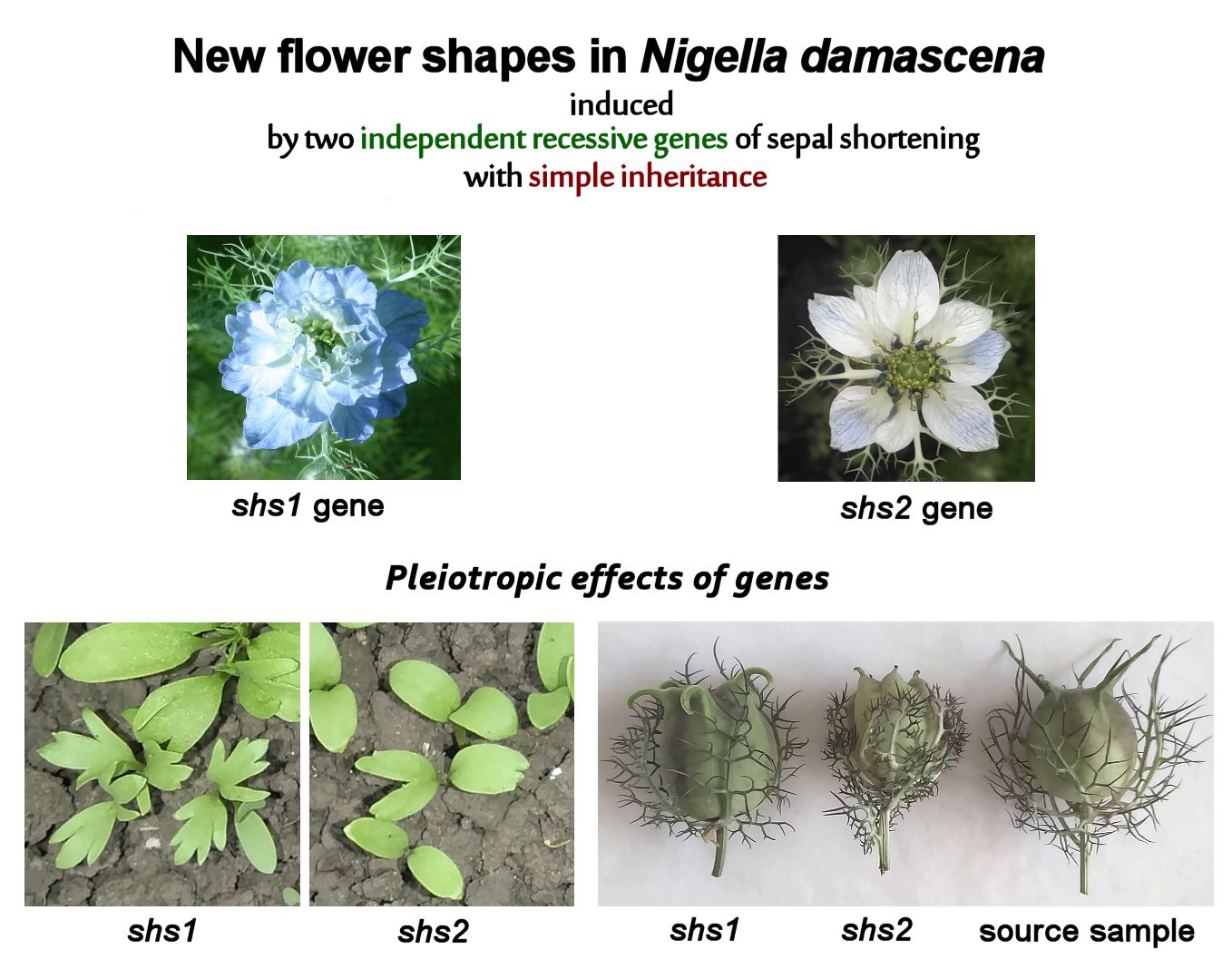New mutations of flower shape in Nigella damascena L., its pleiotropic effects and patterns of inheritance

Published 2023-11-22
Keywords
- flower shape,
- inheritance,
- mutant,
- Nigella damascena,
- pleiotropic effect
- shortened sepal ...More
How to Cite
Copyright (c) 2023 Viktor Lyakh, Anatoly Soroka

This work is licensed under a Creative Commons Attribution 4.0 International License.
Abstract
Two mutants with short sepals were identified after ethyl methanesulfonate treatment of Nigella damascena seeds. In one of them (“shs1” gene = short sepal 1), isolated from the line with double flowers, the sepals, in addition to reduced size, were divided into several rounded lobes, which granted the flower an original rose-like appearance of ornamental value. Another mutant with reduced sepals (“shs2” gene = short sepal 2) was isolated from the line with simple flowers. The allelism test showed that these two genes were non-allelic. Both mutants as pollen parents were crossed with the same line with single flowers. In a dihybrid cross, simple flower, non-reduced sepals (wild type) × double flower, reduced sepals (“shs1” gene) F1 hybrids demonstrated a wild phenotype. F2 progeny, in addition to two parental classes, showed two recombinant classes in a 9:3:3:1 ratio, indicating that flower shape and sepal size were inherited monogenously and independently, and the plant with rose-like flowers was a double recessive homozygote. Reduced sepals (“shs2” gene) in crosses with the single flower line of wild type were inherited as a monogenic recessive trait, showing a 3:1 segregation ratio in F2. Both mutant genes had a number of similar pleiotropic effects, which, however, were different in strength. Thus, both mutant genes shortened leaf segments, divided the cotyledon leaves into several lobes, and caused disturbances in the female generative sphere, leading to a lack of seed setting. At the same time, the identification of mutants as early as at the cotyledon stage, due to the pleiotropic effect, makes it possible to select and maintain them, especially with regard to the mutant with rose-like flowers, which is highly decorative.




